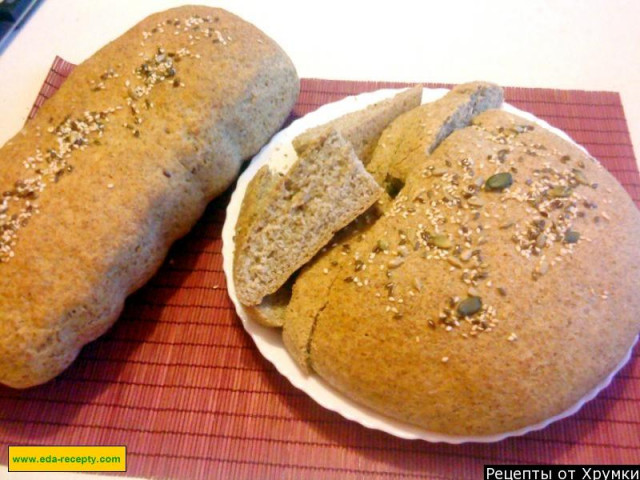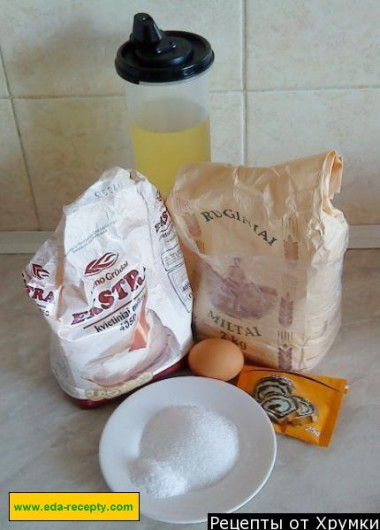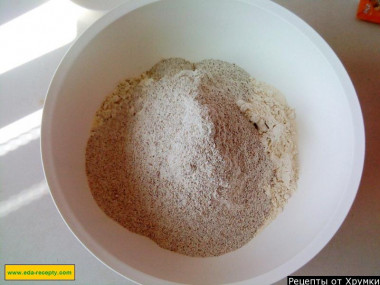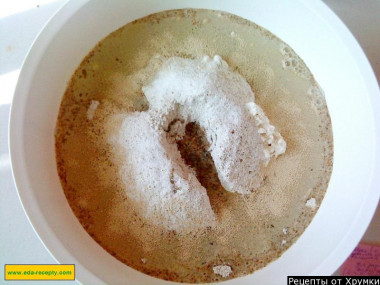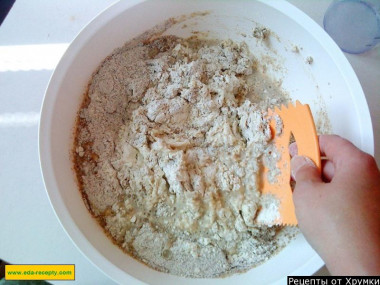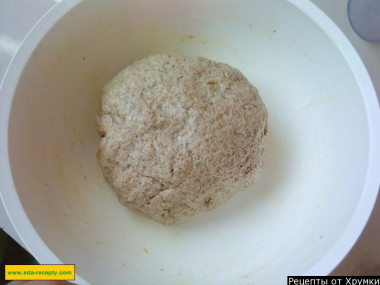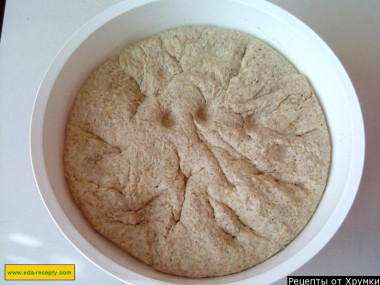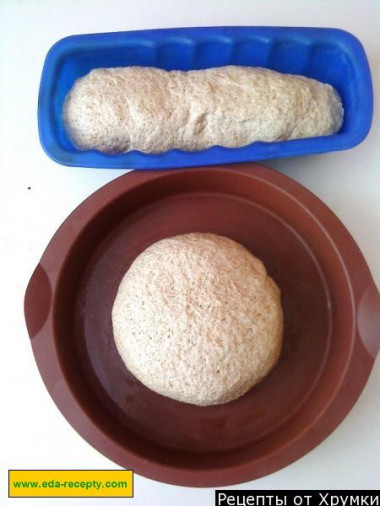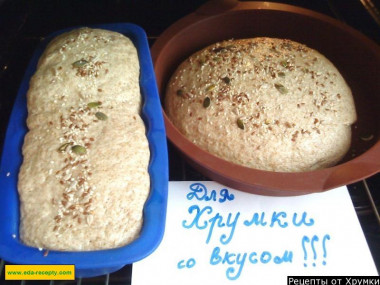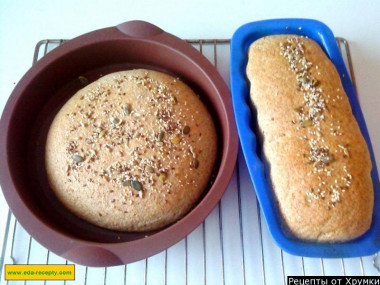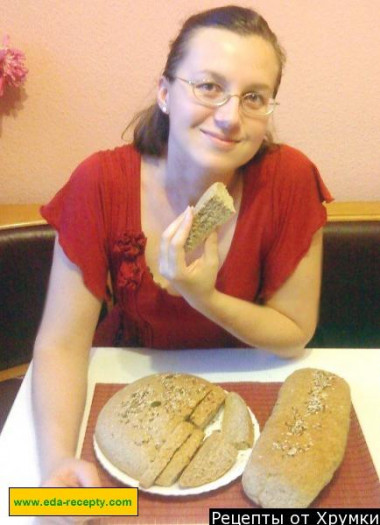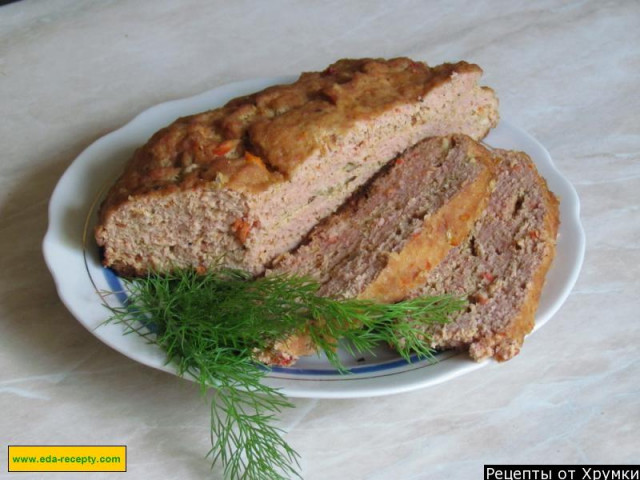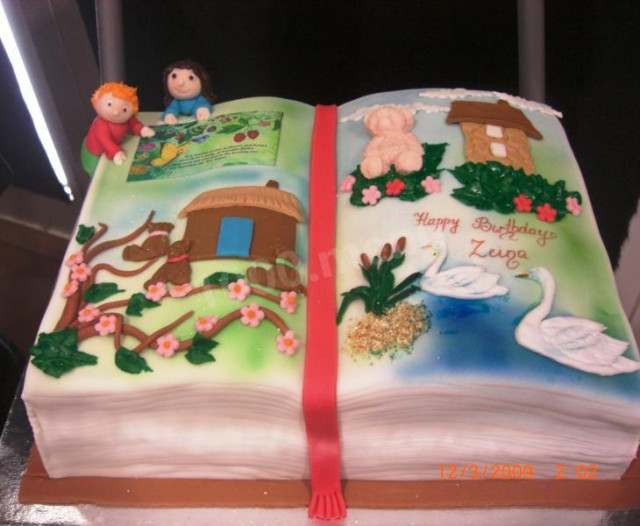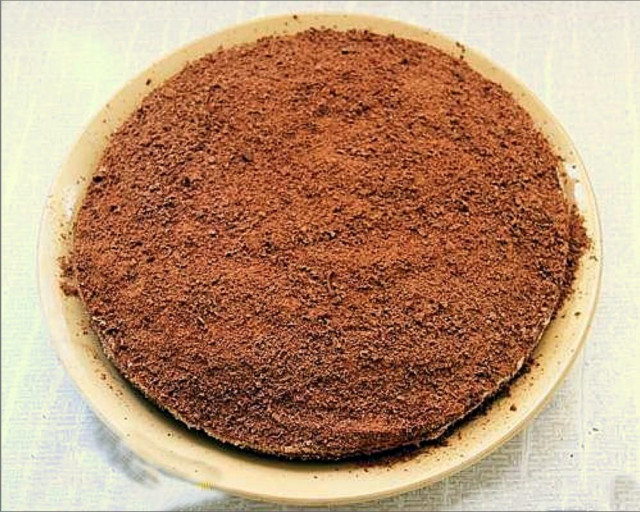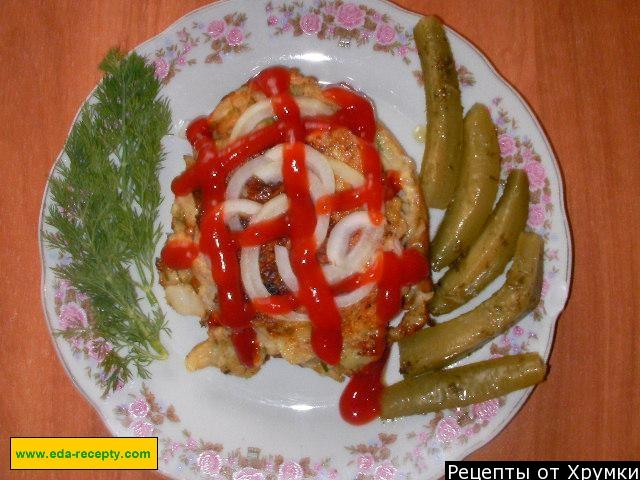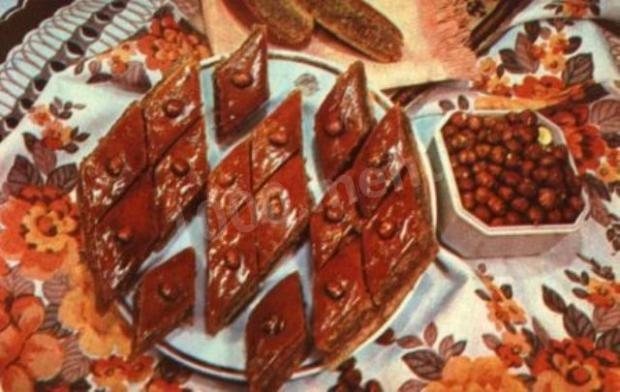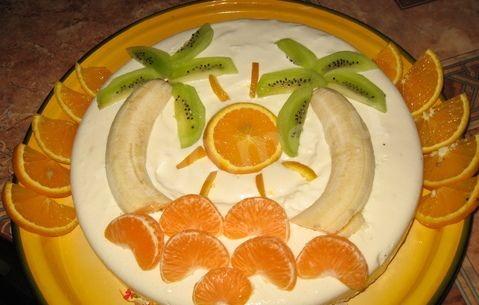Composition / ingredients
Step-by-step cooking
Sift a mixture of rye and wheat flour through a sieve. In the center of the mound of flour I make a hole into which I pour warm water, around the hole I pour dry ingredients: salt and sugar. I knead the dough, it happens that the flour takes a lot of water and the dough is somewhat dry. Then I add a little more water. The main thing is not to overdo it. On the kitchen table, liberally sprinkled with flour, I knead the dough for about ten minutes until it is completely homogeneous. In a saucepan greased with vegetable oil, I oiled the dough from all sides, put the pan in a plastic bag, tie it and give it a couple of hours to come up in a warm place. Then I press down with my hands to release carbon dioxide and sculpt a loaf, which I transfer to a baking dish for bread. I cover it with a clean towel and send it to a warm place for three quarters of an hour. In order for the bread to be shiny, I lubricate the top with an egg whipped in a mixer or just milk. To do this, I use a special culinary silicone brush. I bake this miracle of French cuisine in an oven preheated to 180 C - 200 C. I check the readiness, but bread is usually baked from forty minutes to an hour.
Caloric content of the products possible in the composition of the dish
- Whole cow's milk - 68 kcal/100g
- Milk 3.5% fat content - 64 kcal/100g
- Milk 3.2% fat content - 60 kcal/100g
- Milk 1.5% fat content - 47 kcal/100g
- Concentrated milk 7.5% fat content - 140 kcal/100g
- Milk 2.5% fat content - 54 kcal/100g
- Chicken egg - 157 kcal/100g
- Egg white - 45 kcal/100g
- Egg powder - 542 kcal/100g
- Egg yolk - 352 kcal/100g
- Ostrich egg - 118 kcal/100g
- Granulated sugar - 398 kcal/100g
- Sugar - 398 kcal/100g
- Vegetable oil - 873 kcal/100g
- Salt - 0 kcal/100g
- Water - 0 kcal/100g
- Wheat flour - 325 kcal/100g
- Rye flour - 305 kcal/100g
- Dry yeast - 410 kcal/100g

